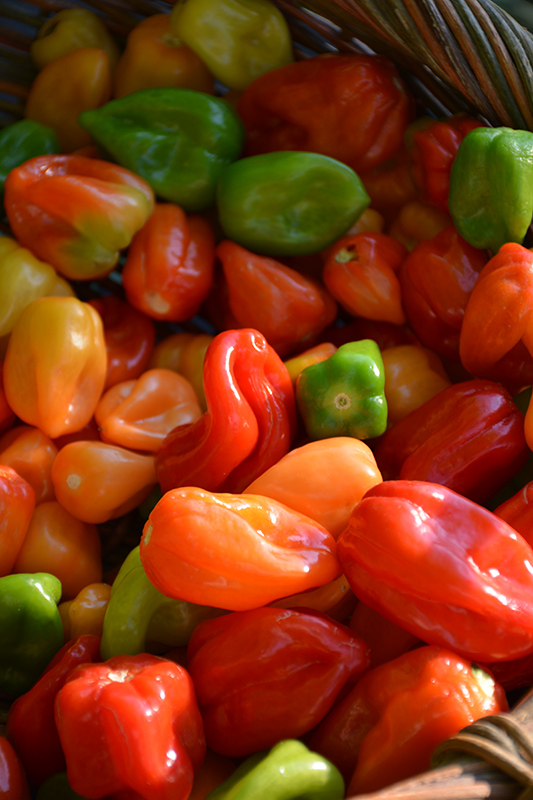Plant Finder
Height: 4 feet
Spacing: 24 inches
Sunlight:
![]()
Hardiness Zone: (annual)
Group/Class: Hot Habanero
Description:
An extremely hot selection that can reach upwards of 8 feet; performs wonderfully in patio containers and gardens; strong, upright stems produce small, brightly colored fruit; delicious when used for hot sauces, drying, salsas and pickling
Edible Qualities
Habanero Pepper is an annual vegetable plant that is typically grown for its edible qualities, although it does have ornamental merits as well. It produces green oblong peppers (which are technically 'berries') with orange overtones which are usually ready for picking from late summer to early fall. The fruit will often fade to red over time. The peppers have a spicy taste and a crisp texture.
The peppers are most often used in the following ways:
- Cooking
- Drying
- Seasoning
- Sauces
Planting & Growing
Habanero Pepper will grow to be about 4 feet tall at maturity, with a spread of 16 inches. When planted in rows, individual plants should be spaced approximately 24 inches apart. This vegetable plant is an annual, which means that it will grow for one season in your garden and then die after producing a crop.
This plant is quite ornamental as well as edible, and is as much at home in a landscape or flower garden as it is in a designated vegetable garden. It should only be grown in full sunlight. It does best in average to evenly moist conditions, but will not tolerate standing water. It is not particular as to soil pH, but grows best in rich soils. It is somewhat tolerant of urban pollution. This species is not originally from North America, and it is considered by many to be an heirloom plant. It can be propagated by cuttings.
Habanero Pepper is a good choice for the vegetable garden, but it is also well-suited for use in outdoor pots and containers. With its upright habit of growth, it is best suited for use as a 'thriller' in the 'spiller-thriller-filler' container combination; plant it near the center of the pot, surrounded by smaller plants and those that spill over the edges. Note that when growing plants in outdoor containers and baskets, they may require more frequent waterings than they would in the yard or garden.
A NetPS Plant Finder tool

